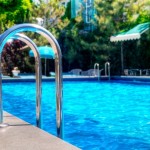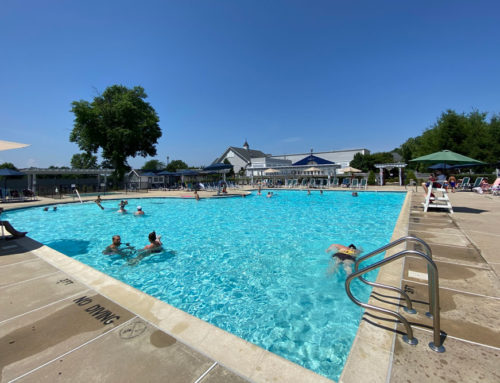Pool maintenance technicians know that the pump is the heart of a pool. This piece of equipment pulls water through the filters and traps contaminants, which helps keep the water clean and safe. It also cycles the water in the pool, allowing the chemicals to disperse evenly. When the filter tanks become dirty from trapped particle build up, the flow rate decreases. This requires the filter system design to be larger so the required health department minimum flow rate is met at all times, specifically when filters are dirty.
The pump also presents property managers with the opportunity to cut down on energy costs with variable speed models and variable frequency drives. These units and additional technology allow maintenance employees to control pump speeds when flow rates would tend to decrease due to the filter function and the amount of swimmers in the pool. Investing in these energy-efficient models and devices can help a pool facility save money while maintaining the required flow rate.
Adjust pump speeds throughout the day
Chances are, the number of swimmers that visit the pool change throughout the day. Pumps have to fit the pool’s needs, so a single speed pump must be able to handle the pool at full capacity and when tanks are at their heaviest use. However, during quiet hours when patrons are not in the facility, single speed pumps still run at the same rate, wasting energy and driving up costs.
Variable speed pool pumps can be set to operate at slower speeds when there are no swimmers in the pool. The slower speeds maintain the required turnover rate of the pool water allowing for pool managers to save on energy costs. To take full advantage of this, a staff member who knows how to use the pump should be on-site to ensure that pump speeds are correct and to facilitate changes during the setup.
Variable speed pumps last longer
Single speed pumps have only one setting. They run at their only speed as soon as they are turned on. The single speed pump cannot adjust. The motor runs at a set speed and RPM until it is turned off with a hard stop.
This factors in to the overall maintenance that the pump will require. Because a variable speed pump is less harsh on its parts than its single-speed counterpart, they can last longer on top of being able to run more efficiently.
Invest in the right tools
Variable speed pumps have a higher initial cost than single-speed units, but they pay themselves off and will save money in the long run. Furthermore, your electrical company may offer rebates for energy-efficient pumps and other pool components, making energy efficiency a sensible investment.






